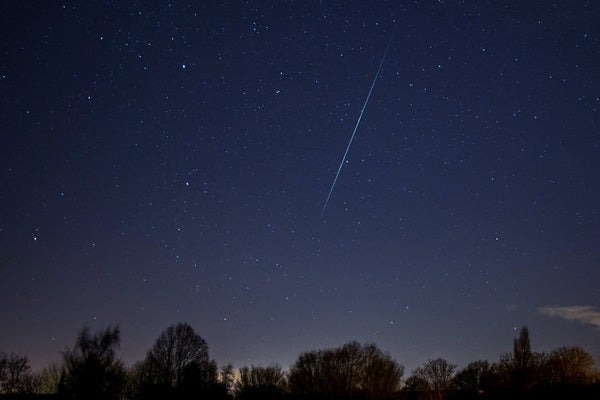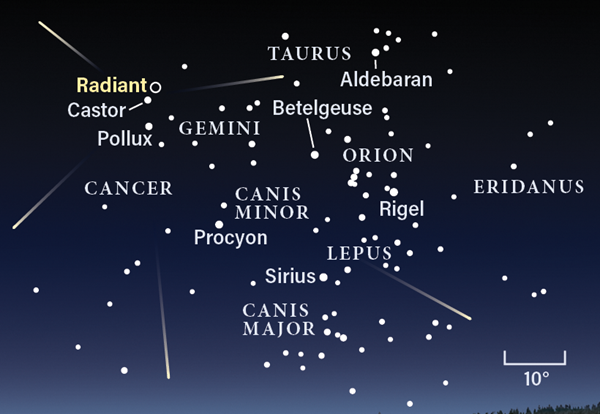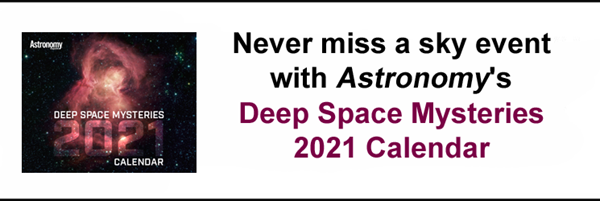With absolutely no interference from the Moon and a maximum expected rate of up to 150 meteors per hour, this is one show you won’t want to miss.
What causes the Geminids?
When comets sail through the inner solar system, they leave behind trails of dust. Periodically, Earth’s orbit carries us through these interplanetary breadcrumbs, which then burn up in our atmosphere. This is what causes most meteor showers.
But some showers are different. The Geminids have been traced back to an asteroid, 3200 Phaethon, whose highly inclined orbit carries it around the Sun once every 1.4 years. This orbit brings it closer to our star than any other asteroid.
It’s possible that Phaethon could be an “extinct” comet whose outer layer of ice has entirely evaporated, meaning it no longer forms a tail when it gets close to the Sun. But more likely, most astronomers think, it’s a true rocky asteroid that cracks when heated by the Sun, shedding bits and pieces that go on to form the Geminids.
How do I watch the Geminids?
According to the International Meteor Organization, the Geminids are the best and most reliable meteor shower of the year. But it’s also a relatively new shower, first seen in the mid-1800s with only low levels of activity (10–20 meteors per hour), according to NASA.
Over time, though, the Geminids’ reputation has changed. Now the shower delights observers with up to hundreds of meteors streaking across the skies, which reach speeds up to 22 miles (35 kilometers) per second. (For a meteor shower, however, this is considered slow!)
NASA Jet Propulsion Laboratory
All meteor showers have a radiant — a point in the sky from which they appear to originate. The position of the radiant lends each shower its name; thus, the Geminids’ radiant is located in the constellation Gemini the Twins. You’ll find it near the bright star Castor (magnitude 1.6), which represents one of the Twins’ heads.
For the best chance of spotting the long trails left by shower meteors, look about 30° to 60° away from the radiant. This way, you’re more likely to spot them as they streak across the sky.
Gemini rises in the northeast about two hours after sunset, climbing higher in the sky overnight. It should be directly overhead for North American viewers around 1 A.M. on December 14th. The best time to watch the Geminids is late evening on December 13th through early morning on December 14th. This makes the shower a great option for younger viewers who can’t stay up all night, or for those who would prefer not to get up early.
This year, there’s also no Moon in the sky to cast background light — the perfect setup for seeing many of the Geminids’ fainter meteors. The maximum hourly rate is predicted to reach up to 150 meteors per hour, but this includes the more common faint meteors as well as particularly bright ones, which are more rare. While you should catch some meteors from any location, the less light pollution nearby, the better your chances of seeing even more shooting stars.
Sunset (December 13): 4:35 P.M.
Sunrise (December 14): 7:15 A.M.
Moonset (December 13): 3:52 P.M.
Moonrise (December 14): 7:13 A.M.
Moon Phase: New
*Times for sunrise, sunset, moonrise, and moonset are given in local time from 40° N 90° W.
Because nighttime in December tends to be chilly for most observers, make sure to dress warmly. After all, it’s easy to get cold quickly when you’re standing relatively motionless under the stars. Snacks and hot drinks can make the experience even better, and check out our regular Sky This Week column for plenty of other easy observing targets to catch your eye.












